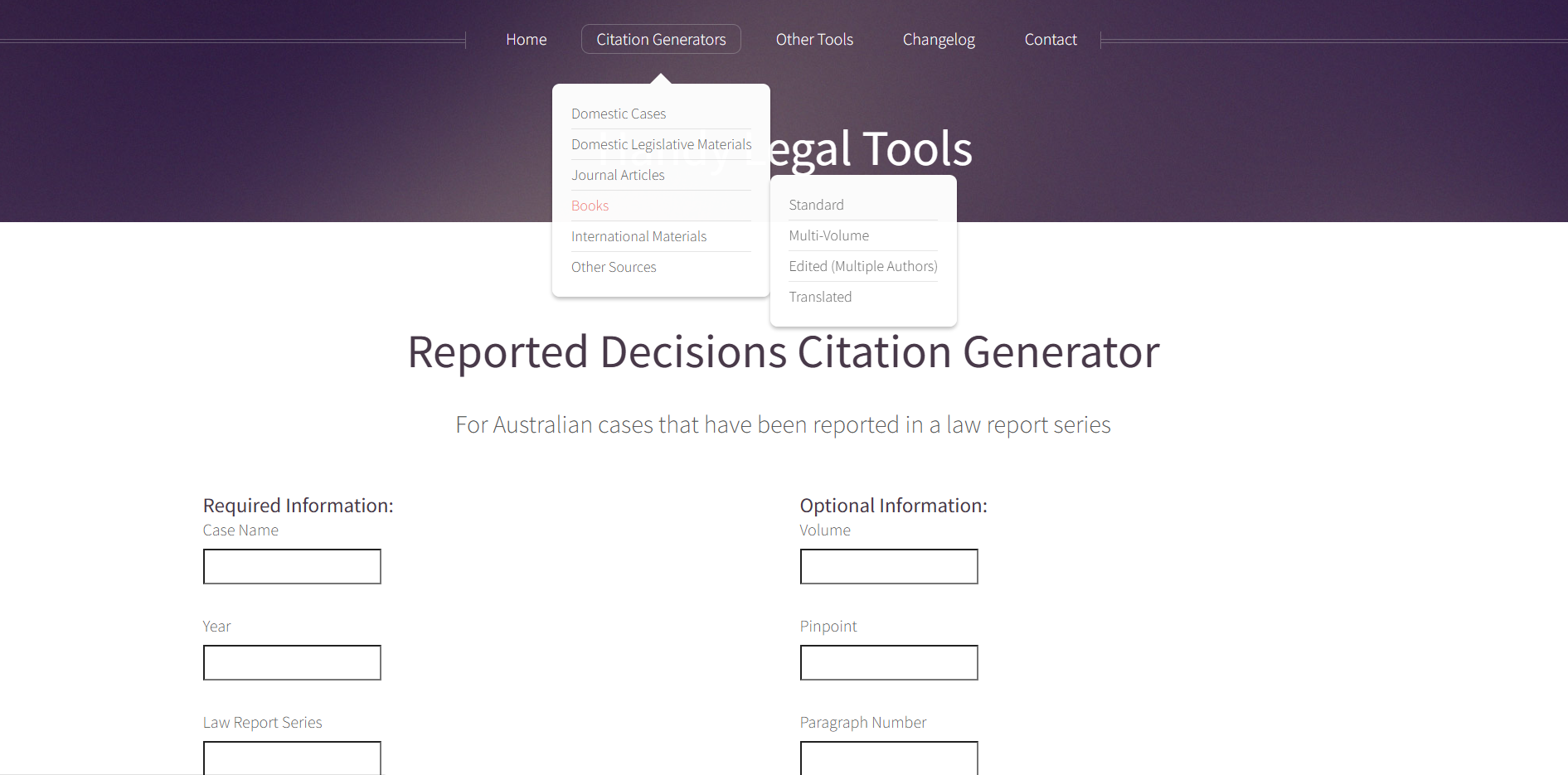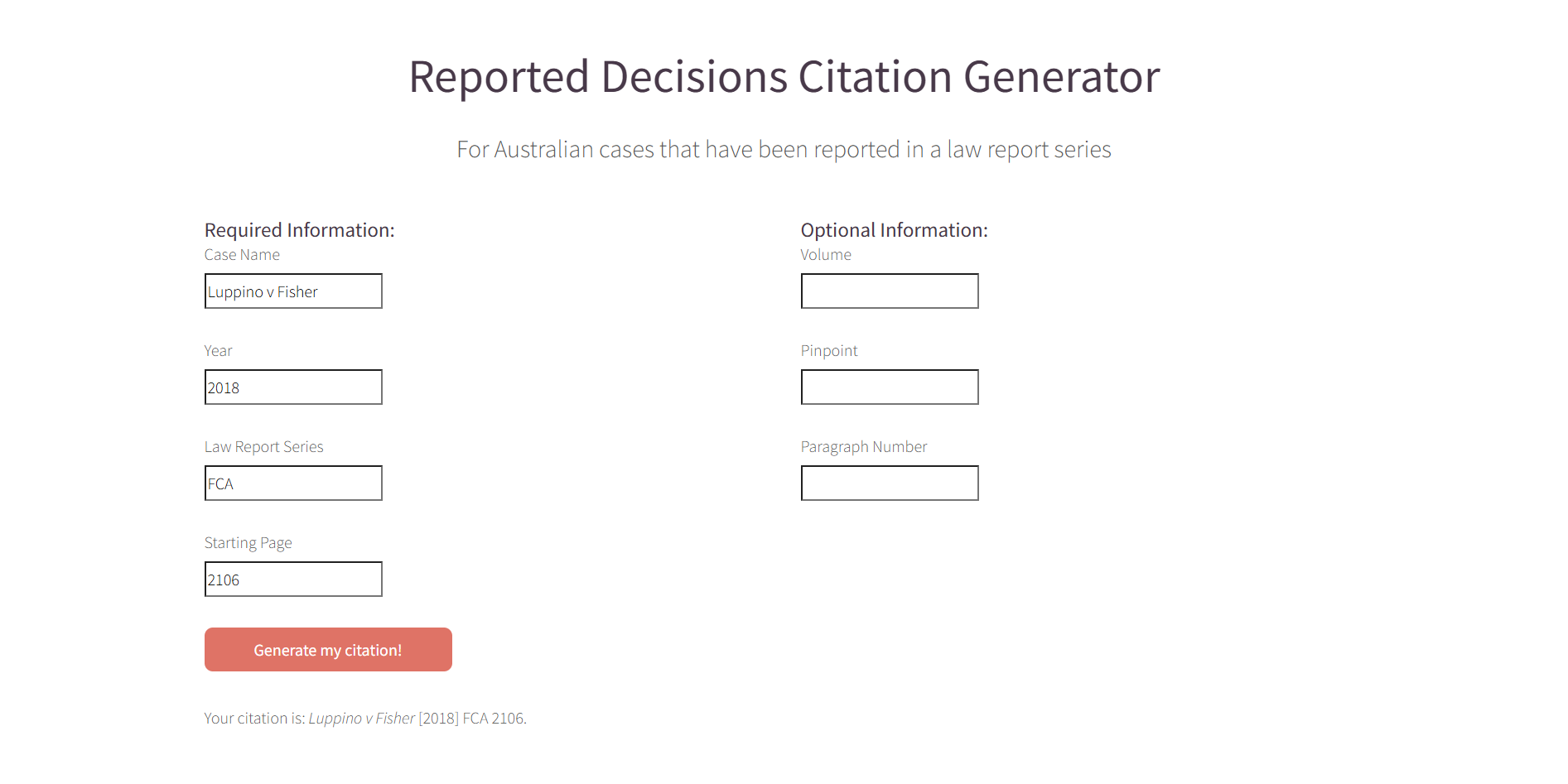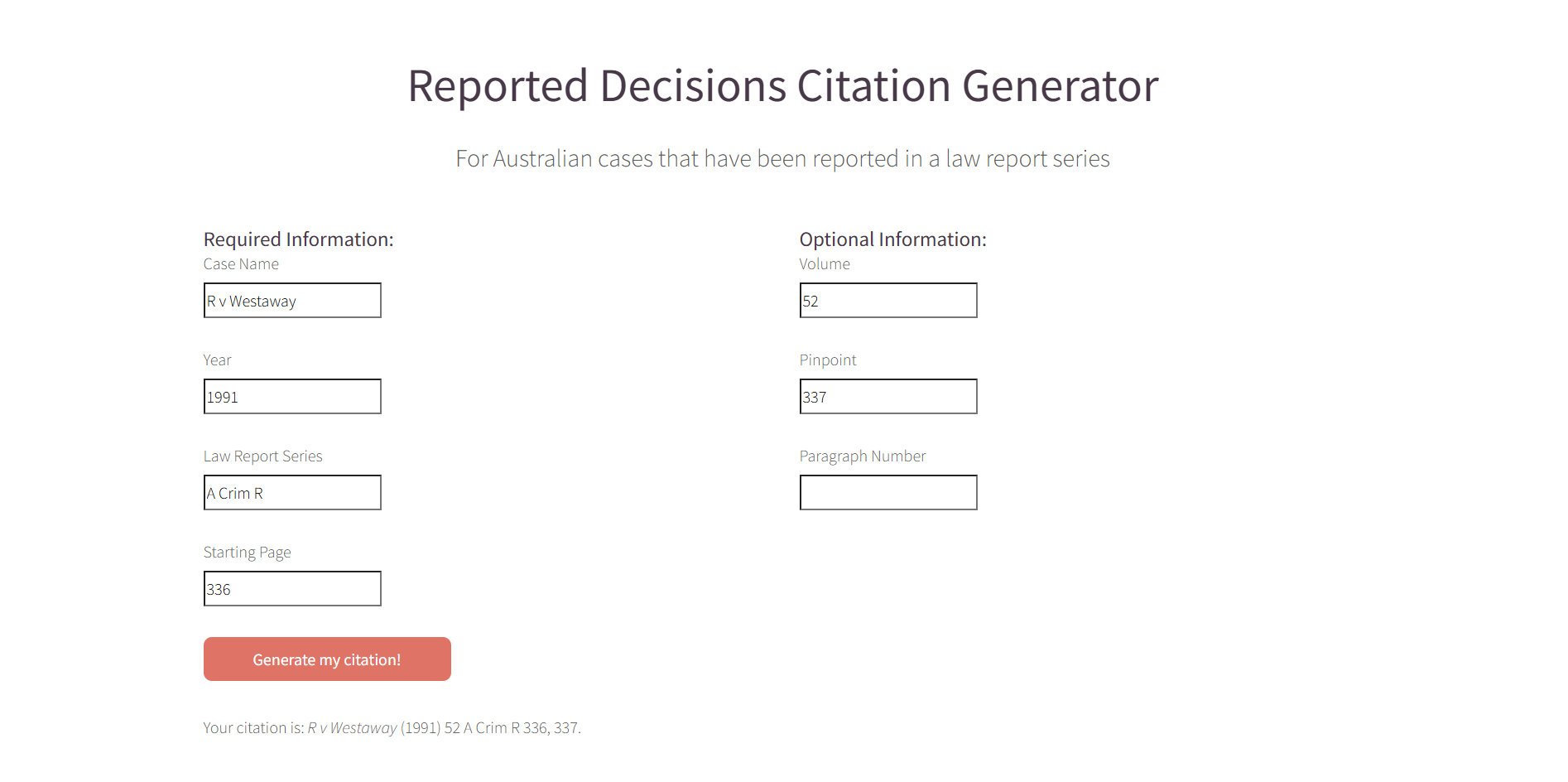Law students write a lot of essays. Thus, research and appropriate citations are necessary. In Monash law, and indeed numerous other law courses in Australia, the preferred referencing system is the Australian Guide to Legal Citation. While I am a fan of clear rules, it is time-consuming to write footnotes following the AGLC4’s strict system. Therefore, I decided to do the most reasonable thing: Create a series of web-based generators to do it for me.
But First: What is the Australian Guide to Legal Citation?
The Australian Guide to Legal Citation (4th edition), or AGLC4 for short, is simply a collection of rules on how sources should be referenced. Just like with any other system of citations, the idea is to make it easy to locate and verify the source at a later stage. The main difference between the AGLC4 and other systems, such as the Oxford referencing system, is that it has a focus on legal sources, such as cases and legislation. Beyond that, it is more or less the same as other footnote-based systems.
The guide itself is published by Melbourne University and is available in its entirety as a PDF. Just scrolling through the PDF is enough to drive some insane, due to the sheer number of source types, rules and exceptions. Nevertheless, it is vital for students to be familiar with the AGLC4, as citations/references are often a marked component of in-semester law assignments. That’s when I decided I should try and create something to make it a little easier for students to apply the AGLC4 correctly.
The Birth of Handy Legal Tools
Surprisingly, this project was not my first attempt at making a ‘citation generator’. Back in high school, we were required to use the Oxford referencing system for a number of subjects, so I also created a series of generators for different source types following the Oxford system. However, this was my first time making it as a website, as opposed to a collection of Python-based executables.
To make life a bit easier, I used a template from HTML5 UP. From there, it was trivial to modify the layout of the site to have groups of pages for different categories of sources, such as cases, domestic legislation and international materials.

An example of the dropdown menu, showing the different source types
From there, it was a fairly simple case of looking at what information was needed for a citation, turning those into input fields (splitting them into ‘optional’ and ‘mandatory’) and then using simple string manipulation to create a citation, depending on what fields have been filled in and what the AGLC4 provides for the given source type. Because I am a cybersecurity enthusiast, I also used DOMPurify to santise user input to prevent arbitrary code injection. I then repeated this process for a number of source types, ranging from books and journals to speeches and websites.

A sample citation for a reported decision, published in a law report series that does not use volumes

A sample citation for a reported decision, with optional information being used (volume and pinpoint)
What Next?
After implementing a number of generators (as of 2 June 2024, there are 18 generators), I added some other, useful tools such as a ’law report series’ sorter, which tells you which law report is the most authoritative (though it is not conclusive).
On top of potentially adding new features, depending on what people need, I’m always on the lookout for errors in the existing generators. If you spot something that’s wrong, or that you think is wrong, use the contact details on the site to reach out and I’ll have a look. If you have ideas for what else I could add, you can use the same details to send me your ideas.
Happy researching!
Link to the website: https://cryptoblade42.github.io/HandyLegalTools/
Banner image credit: Giammarco Boscaro. All other images by me.